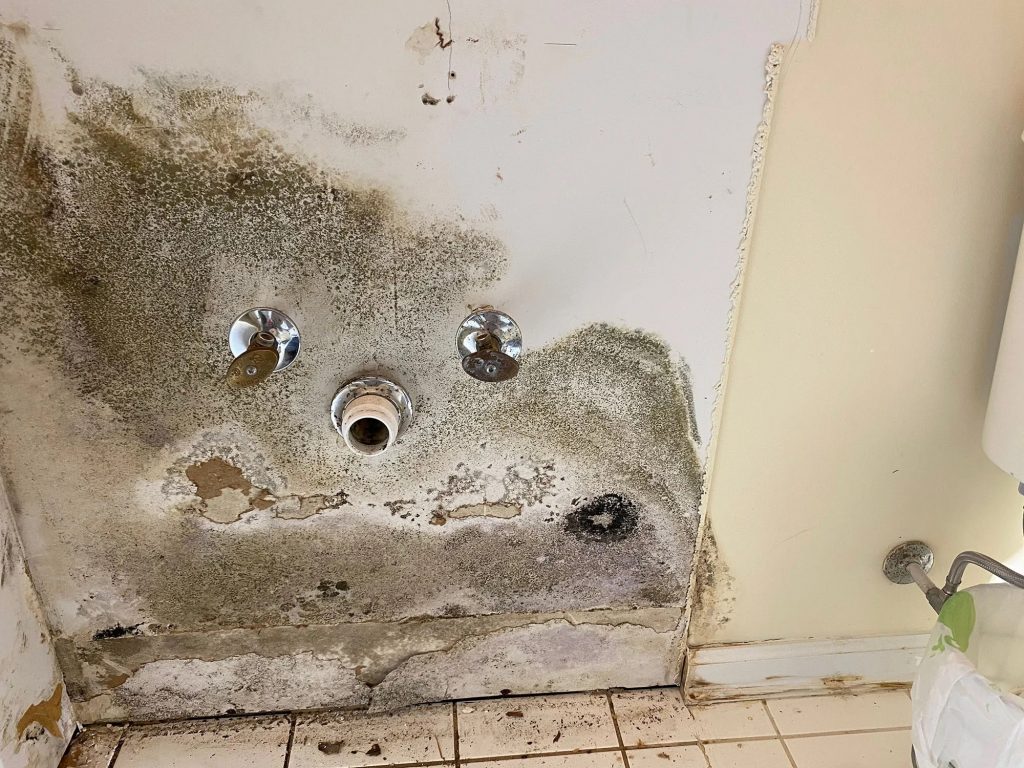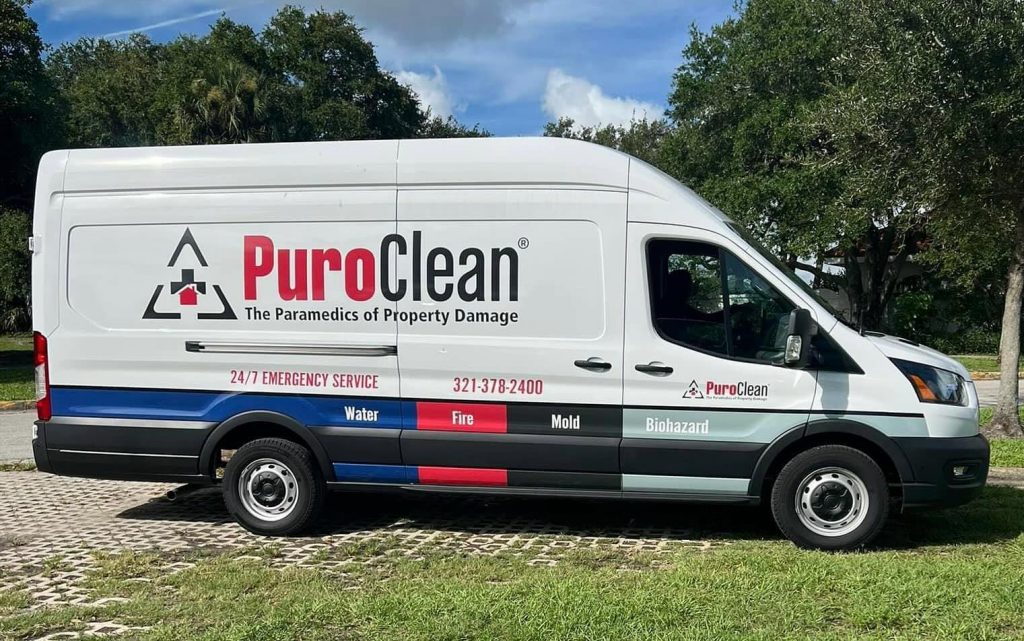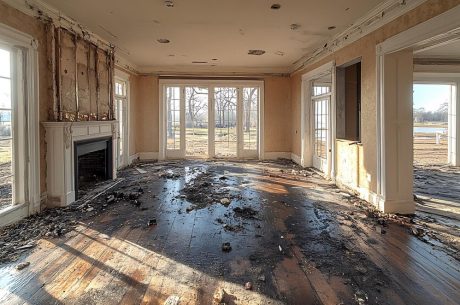Mold, when it gets out of control can be hazardous to your Melbourne, Florida home and property and should be taken seriously. Whether you own your own house or live in an apartment, it’s important to understand what causes mold and what to do about it.
Where Does Mold Come From in Melbourne, Florida?

There is an origin to every story, and for mold, that story starts with its microscopic spores that are ever present in the air around us. In this state, mold spores are inactive and mostly harmless as they float through the air. It isn’t until the spores start germinating into dark splotches on your wall that mold becomes a problem.
So why isn’t your Florida house covered in mold if its spores are everywhere?
Before mold can grow, it needs a combination of moisture and organic material. Moisture can come in many forms — a spill, a leaky faucet, bathroom steam, condensation on an A/C unit, or even just high humidity in the air. It’s important to address any issues that cause excess moisture to build up in your home.
Mold also requires organic material to grow. You’re probably already aware that mold likes to grow on cellulose-based surfaces like paper, cardboard, wood, drywall (gypsum), and fabric. But did you know that it can also grow on organic components of dust and paint?

Mold
- Fungus: Mold is a fungus that can grow in damp, warm conditions.
- Health Concerns: Mold exposure can cause various health problems, including respiratory issues, allergies, and potentially shingles.
- Risk Factors: High humidity, poor ventilation, water leaks, and flooding can contribute to mold growth.
- Prevention: To prevent mold growth, maintain good indoor air quality, address water leaks promptly, and ensure proper ventilation.
Note: While research suggests a potential link between mold exposure and shingles, more studies are needed to establish a definitive causal relationship.
The other thing to take note of is the structure of the surfaces mold tends to grow on. When mold spores germinate on a porous material like wood and drywall, they extend their hyphae beneath the surface, growing directly into the material. This makes it very difficult to clean the mold completely — and when this happens, the moldy surface often needs to be removed and replaced. On the other hand, mold growing on nonporous materials like metals and glazed ceramics isn’t able to penetrate the surface and can usually be cleaned off with soap and water.
How Can You Tell if Mold Is Growing in Your Home?
There are many types of mold species. Most often you’ll find black, brown, grey, or dark green splotches on the wall. Sometimes they can be dry or powdery, and other times they may feel wet and slimy.
Sometimes you might smell mold before you see it, especially if it’s growing in hard-to-reach places. The smell of mold is musty, stale, and earthy — somewhat similar to the odor of wet socks or decaying wood.
If you’re looking for where such an odor is coming from, try to look for mold growing on damp surfaces — such as on bathroom tiles or in your crawl space.
Should You Be Concerned About Mold?
Read Also: Mold and Shingles: Can Mold Cause Shingles in 2024?
Mold can pose a significant risk to your health. Symptoms of prolonged mold exposure include:
- Runny nose
- Itchy eyes
- Wheezing
- Coughing
- Scratchy throat
- Rashes
- Headaches
- Frequent sickness
When left to grow unchecked, mold can also cause significant property damage. It eats away at organic material over time and gradually decomposes the surfaces that it grows on, such as walls and wooden supports.
How Do You Get Rid of Mold?
Depending on the size and severity of the mold problem, you can either clean it up yourself or call a mold professional for help.

If the total area covered by visible mold is less than 10 square feet and within your reach, you can likely take care of it yourself. Here’s how to remove mold using diluted bleach:
- Fix any underlying moisture problems (e.g. a plumbing leak) and dry the area.
- Wear personal protective equipment, including gloves, goggles, and an N-95 respirator.
- Make sure the work area is well-ventilated. Open doors and windows or use a fan to exhaust the air to the outdoors.
- Use a vacuum cleaner (preferably with a HEPA filter) to suck up loose surface mold and debris.
- Use a disposable rag to scrub the moldy surface with water and detergent, then discard the rag when you’re done.
- Mix 1 cup of bleach into 1 gallon of water. Do not add any other cleaners.
- Use a spray bottle to apply the diluted bleach solution. Don’t rinse it immediately — let the solution stand for at least 15 to 30 minutes to set in.
- Scrub the surface with a stiff brush and rinse with water, then allow the surface to air dry completely.
If the total area covered by visible mold is greater than 10 square feet, it’s highly recommended to call in a licensed mold remediation professional.
What Can You Do To Prevent Mold in the Future?
Dealing with mold can be stressful, but with proper maintenance and care, you can prevent mold from growing in the first place.
The most important thing to do is control moisture within the home. You can do this by making sure your home is well ventilated (e.g. opening windows or turning on the fan) and promptly cleaning up any spills or water leaks.
If you’re feeling a bit more cautious you can also get an air purifier to help reduce the number of mold spores in the air.
If you find that your windows tend to have mold around them, it could be an issue of thermal bridging. Thermal bridging is when uninsulated glass or a metal window frame causes the surface of a window to be cooler than its surroundings, resulting in unwanted condensation forming. This in turn leads to unwanted moisture on your walls.
As a homeowner, you can address this problem by replacing the glass or frame to improve insulation. As a renter, you can talk to your landlord about replacement, or place in thermal curtains to mitigate condensation.
Restoration Services Provided by PuroClean of Melbourne
Conclusion
Mold exposure is a concern for many residents in Melbourne, Florida. While the exact relationship between mold and shingles is still under investigation, the available evidence suggests a potential link. By understanding the risk factors and taking preventive measures, you can reduce your chances of developing this painful condition. If you have concerns about mold exposure or shingles, consult with a healthcare professional or contact PuroClean of Melbourne for expert assistance.
Mold, Fire, and Water damage restoration service in Melbourne, Florida?

MORE INFORMATION BELOW:
Service options: Online estimates · Onsite services
Located in: Coastal Technology Center
Address: 739 North Dr, Melbourne, FL 32934
Hours: Open 24 hours



